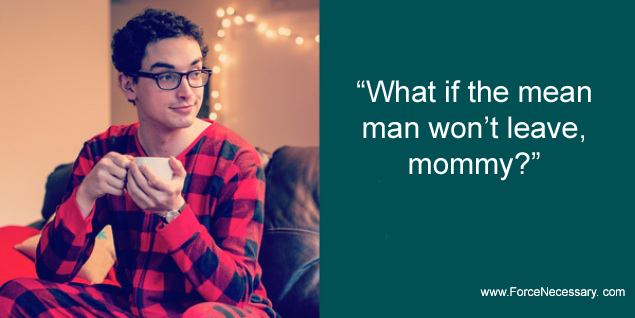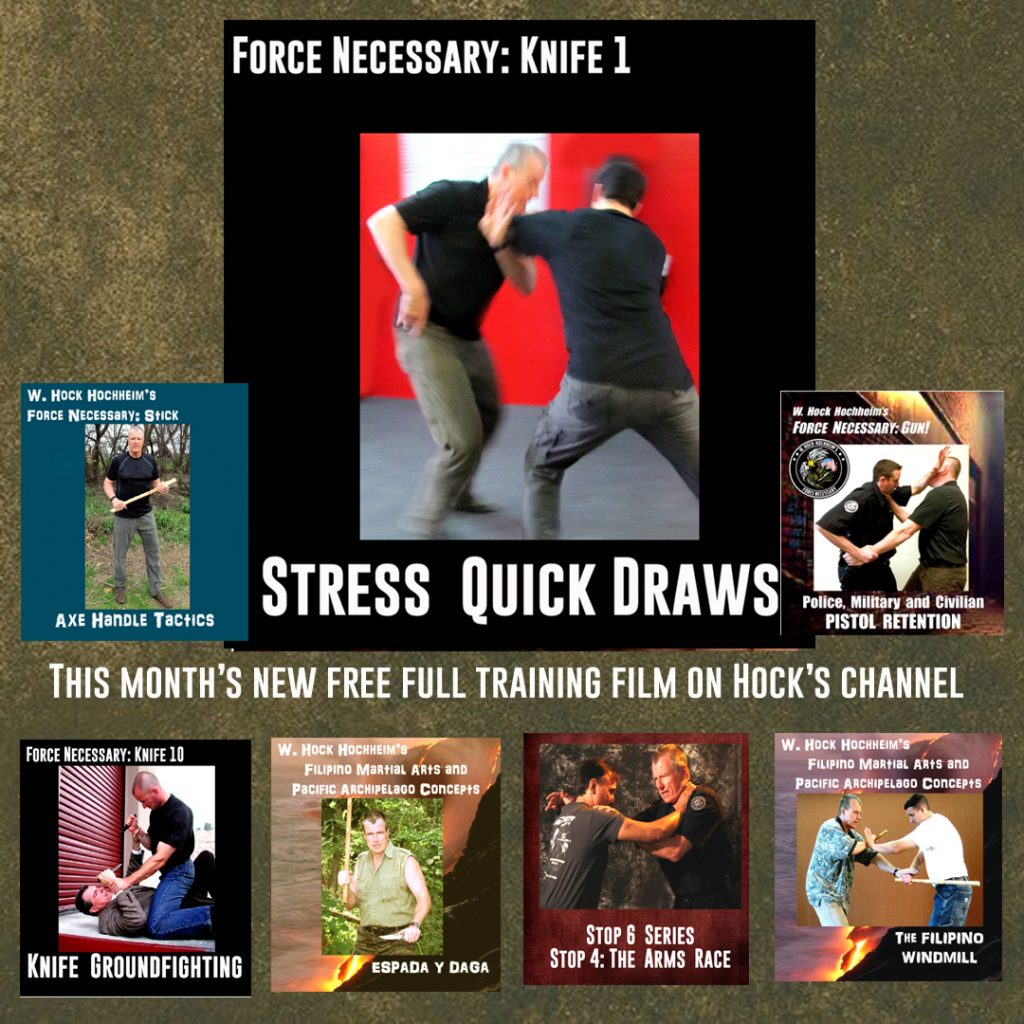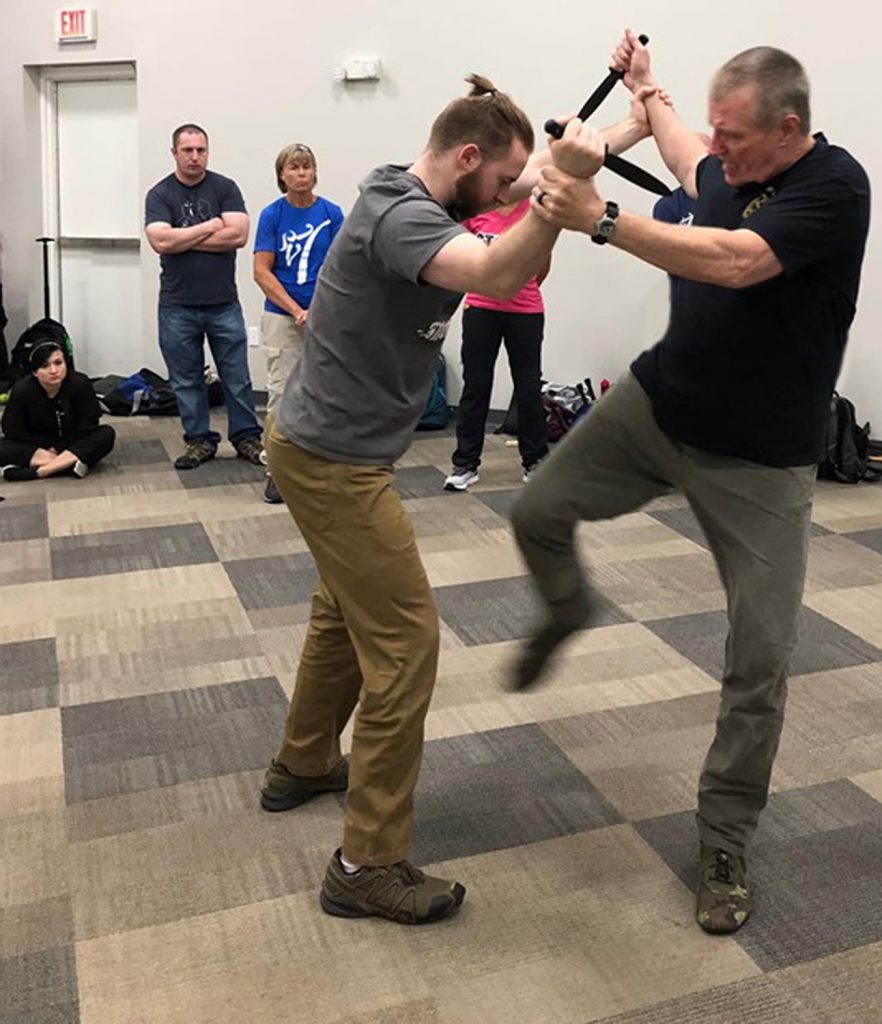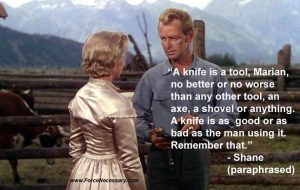Or…How To, or How NOT To, Maintain a Popular Knife Course
Through time, the who, what, where, when, how and why, my original, once quite popular, Force Necessary: Knife combatives course “fell down,” “fell away” from pop culture. While I still get to teach it around the world, it has slipped way below the pop radar in lieu of other pop programs and my business mistakes. So, when did I take the fall? It happened slowly and then one day you are down looking up.
You see, the “new kids on the block” don’t know that before the fall, I once was “somebody.” In the 1990s I was part of a resurgence, a re-look, a re-examination of older knife material (which essentially was mostly a lot of knife dueling, and much of that based on swords). Things needed evolving. Things needed converging into performance coaching, modern law and rules of engagement.
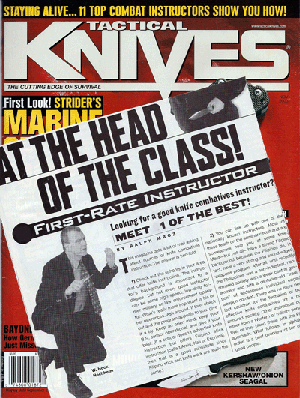
Studying and teaching “knife,” for 30 years comes with its own inherent, stigma problems and limited interest, we all struggle with. The knife world is also very small. So small, one might ask, “Why bother?” Why not just sell Italian shoes? What is this knife world? Who then prioritizes the knife and in what ways? My thoughts –
- Group 1: Hobbyists (think collectors and martial artists.) One interest group are people who “hobby.” There is something historically and visually appealing about the knife and the certain shapes, construction, sizes and history of knives. People collect anything and everything, that includes knives. Think about the simple collectors of knives. To collectors, practicality and use does not factor much into knife collector’s minds. Just the aforementioned make-up. Most collectors never train to fight with them. A very rare few are “doing. The category of hobbyists includes martial artists. Filipino martial artists place some priority on the knife but seem to overdo the stick. Just look at all the FMA group photos and the practitioners holding sticks. Most other martial artists spend some time in sports and some work on only “unarmed versus the knife.” Just obsessing over dueling alone, is not maximizing knife survival. I am well on the record for supporting your martial hobby. Be happy. Just know where what you are doing fits in reality.
- Group 2: Worriers. Another interest knife group is the “Oh no!, Oh, crap group! Knives exist everywhere! “So, we need to ‘do’ them, to survive.” This group mostly includes some aware ground-floor workers and worried citizens. Ground-floor workers? These are line operators as in “ground-floor” police and “ground-floor” military. And even then, knife studies are usually far from a priority for most of them.
- Group 3: A smaller group of both. The third and smallest group include folks interested in both 1 and 2.
From a business perspective, these groups are the ones you knife folks need to advertise with. Good luck finding them all. Customer acquisition! As a teacher-practitioner, I am mostly in the above “worriers group,” dismissing anything fancy or artsy. When you worry, you worry about before, during and after the attack. None of this is a hobby for me and I don’t do cartwheels over various looking knifes, no more than I would if I examined hammers or saws. They are just tools. Your knife is nothing but a tool. But, the above 3 groups are the knife world we live in. What were my and other ‘s business mistakes?
Business Problem 1: The Knife Business is a Stigmata. I mean to say that studying knife fighting was and is still not at all popular. It might be a origin mistake to bother trying. A very rare few are “doing” it. Once teaching and learning, I don’t like many terms, images, messages, logos, etc. relating to the negative stigmas surrounding knife fighting, A rebel, thug, skull etc. persona.
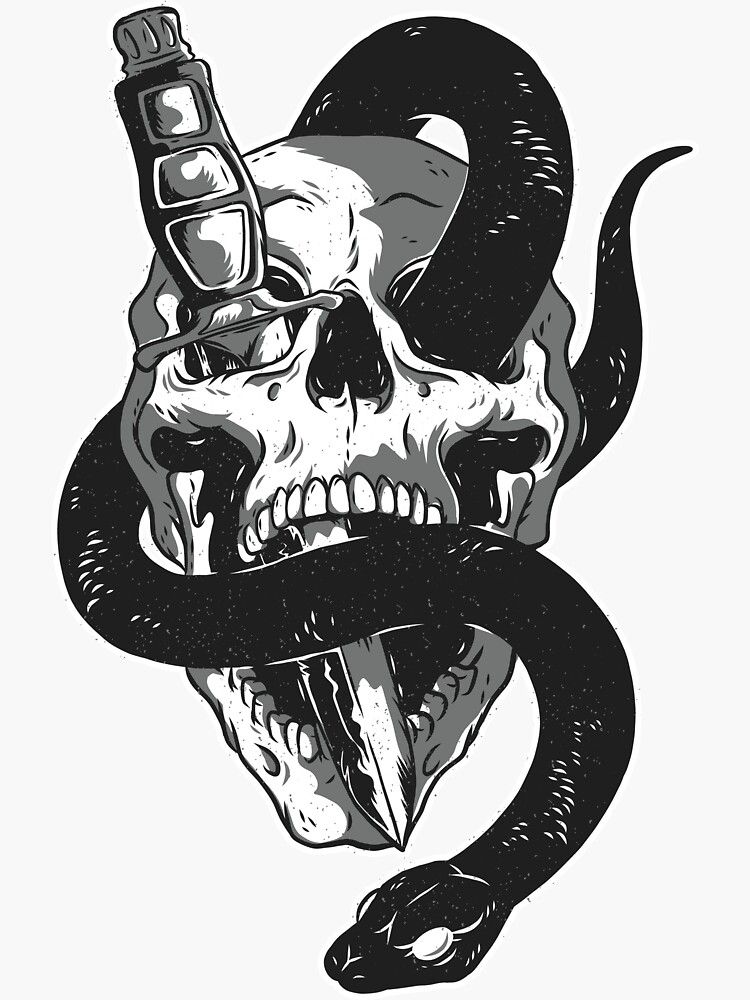
These realities are not too popular for the “new kids” that want to appear a bit rebellious? Learn and-or teach slicing, dicing and gutting people with a knife, void of situations and the law. This marketing can be naïve, reckless and immature, incomplete and a ticking, legal time bomb for you. All the legal prosecution needs to do is show a jury a few of these system names (course names and knife names are so, so important) photographs, logos, teachers and characters and you the associated user, become jailbait. I say stupid, but still they are “money smart,” and more popular and sought after than me. By the grace of God they go…until…they have to use that knife. Mature survival is surviving-enduring before, during and after a violent event. The end game – as in the legal aftermath, is a big part of a well-thought-out, course.
Various ultra-violent, “skully” death messaging should be reserved as a primer mentality for very serious, military, combat groups. THEIR war psychology. Their war prep. Their war world. Not cops and certainly not every day, walk-around citizens. Mimicking them makes you look like a wannabe punk. Look at the lawsuits filed on cops and citizens – go ahead – have a little death-engraved-logo on your gun (or knife) and see what happens when you shoot someone. Have a patch or tattoo of a grim reaper with a knife, or a skull with a knife through it, and see what happens when you have to legally use a knife. We the police, the prosecutors search your history. Take this idiot for example – I read one New York City, very popular, international knife “cartel-liberty” group headline atop a Facebook page:
“I love it when I carve someone’s balls off and put them in his empty eye sockets.”
Shit man, you think you’re Rambo? You probably work in a fucking supermarket. And you think and talk like this? You need to be on watch list. Fantasy jerk-offs like this give us all a bad name. But images and expressions like this, or near like this, this mystique, does attract a certain sick customer, usually young, or young in the brains anyway. (By the way, after my public complaints and comments on this guy, this must have reached the then Colorado headquarters and this sick-moron took that line down.)
Stigmata-wise, many still call knife training, “knife fighting,” but I don’t like that term, even you are still indeed, fighting with a knife.
Business Problem 2: Failing to Emphasize the Knife Enough. I escaped all existing systems by 1997. Just quit. I had-have a dream! I seek to produce the seamless hand, stick, knife and gun fighter, standing through ground. You do what you got to do, with what you got, where you are. So, this halfway means I do not over-emphasize a knife course or any single course. While I was once in the 1990s and 2000s well known in our small world “for the knife,” I am not now, which puts me behind the knife marketeers. I have built four great, competent individual, non-sport, survival courses which I blend. I can clearly debate ANYONE on course doctrine points. Each course stands a lone, but shooting for the big hand, stick, knife and gun fused end-user, final product has cost me in the knife marketing “ground.”
Business Problem 3: Being too Independent. Another business problem for me? No “flags.” I have no crutch system, no flag to fly, like Pekiti, JKD, Brazil-Mania, Krav-mania. Silat. Arnis. Bruce Lee. UFC. No uniforms. No 12 knives on a vest. No tribal brotherhoods. It’s just little ol’ me flapping in the wind about the knife. I can’t attract these extraneous-system-people, capture super search martial arts terms, as some of those attached are obligated to attend. Despite my avoidance, we business-mature know the established advertising fact the “the grass is always greener on the other….” side of the street? Other country? The sewers of Spain. The temples of Thailand. The monasteries of China? The borders of Israel…the…and so on. Me? My mistake is I appear to be just a bland, white boy with some info. I don’t even have any tattoos!
Business Problem 4: Rise of the Replicators. Of course, with all businesses, this 1990s and 2000 knife movement kicked off a new interest and a fair number of new knife courses popped up often by less experienced, less organized people, and in my opinion doing less comprehensive programs. But this business evolution is to be expected. Invent a new “widget?” There’s a knock-off widget. Then knock-offs with an “S.” In the big picture of training and education however, not widgets, this can be a positive thing. Awareness. Curiosity. Growth. Evolution. And then sometimes no growth. Still, the old often helps the new. The “standing on the shoulders” thing.
Some 25-odd years later, in about 2015, on a popular public forum someone asked me what I thought of Johnny Swift’s new, knife, quick-draw article in an internet magazine. Of course, it wasn’t called knife quick draws. It was named something super-spiffy like “Armageddon Instrument Production,” but it’s just knife quick draws. It was declared brand-new, Biblical-worthy advice Swift preached, and published in the new amazing world of web-jargon magazines called like “Organic Micro Evolution of Edged Prophetic Dynasty.” (I really just made that magazine name up, but how far am I off? You remember that recent trend of densely tech-naming courses and articles? Weren’t you impressed, or can you see right through the disgusting, abject pretentiousness? Twenty and 30 year-olds salivated with these techno titles though! But thank goodness that trend has been dissolving. In this case, it’s really just “stress quickdraws.” It’s not “Rapid Production of Edged Antiphon.” or other poorly veiled, douchebaggery.
Anyway as requested, I read Swift’s ground-breaking, testament as featured in “Retrograde, Skill Supremacy, Elite Magazine” and I replied on the public forum –
“Oh, I have to like Swift’s article. It is virtually, word-for-word,
from my 1995, Knife Level 1 quick draw outline.”
“WHAAAAT” said the young world? My review/remark caused a lot of guffaws and a few smart ass remarks, among the 20 and 30 year old readers, most of whom were so submerged in modern “dynasty jargon,” up to their fad-beards in mystique, and lost in the web world. They’d never even heard of us older guys from the 1990s and 2000s. I mean, who am I to comment like this on their latest fad-boy genius? I added that I was not suggesting that Johnny Swift plagiarized my outline, as it might have innocently been co-opted, or the older info has become so, ever so embedded into the “knife world” it was deemed as open knowledge. Or it was invented, like language, in isolation. I get that. Sure. That happens. (That level 1 knife outline is/was free to the public and has been distributed for literally 3 decades now, and my knife book – declared as the best knife book ever – has been for sale since the 2010s.)
One guy was clever enough to say, “Well, sorry I missed you when I was 5 years old.” Ha! I told him that really was a pretty damn, clever, funny retort. It was really. But missed me? Dude, I never left. However, actually, he never knew I was around to begin with. That is part of…the “fall.” I added in that discussion with Mr. Wise-asses that the spread of education was a good thing, and I probably partook in that process. I reminded the “guffawers” that I participated. I said that the old helps the new. As a great gun instructor Dave Spaulding likes to remind us, “It’s not new. It’s just new to you.”
I also frequently read these days, what is considered catchy and new terms, ideas and expressions that I already published and advertised decades ago. For just one example – a newer knife course (populated by death skeletons and skulls and counter-culture) uses the working-man-world word terms of “Journeyman,” “expert,” etc. Tradesman titles, etc I used first in the 1990s.
Contemplating these copycat things, I consider this list:
- I was pirated. Or,
- I contributed and was not credited. Or,
- I contributed to a base of general knowledge, of which no one knows the sources. Or,
- The information grew organically and independently and by coincidence and it matches my old material.
- If a “new kid” saw my knife book and rank list levels today, they probably would declare that I stole it from another new kid. Oh the irony.
But anyway, inside a comprehensive knife course should be:
- Who what, where, when, how and why questions
- Knife vs hand. Knife vs stick. Knife vs knife. Knife vs some gun threats.
- Standing, kneeling, sitting and on the ground.
- Saber and reverse grip experimentation.
- Skill, flow, speed developing exercises.
- Knife combat scenarios and situations.
- Lethal and less-than-lethal applications.
- Legal issues, rules of engagement and related smarts.
- Criminal history knife research.
- War history knife research.
- Here’s your subject-topic outline list. What are you doing to maximize each subject-topic in your knife doctrine? How competent and thorough is it? Or do you just want to play around with this very deadly, dangerous subject?
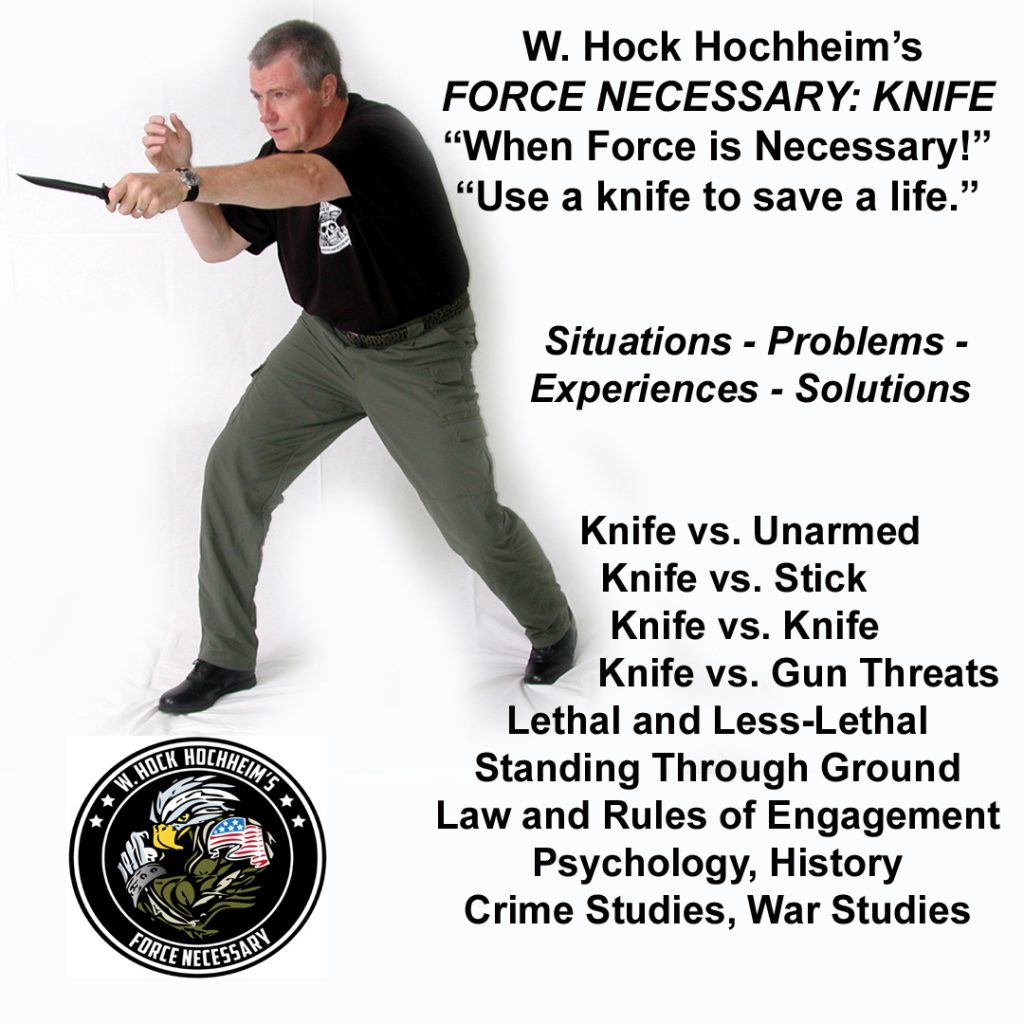
Just a few of us were those innovator pioneers and helped turn some tides in the 1990s and 2000s into what it all has become today, for better or for worse. Maybe you young fellers will learn from my mistakes? Establish new standards? Flesh out topics?
It’s always good to mention and/or thank your prior teachers once in a while. I always do. But, before you young knife guys make any sarcastic jokes about me and the few other 1990s guys again, keep in mind…your modern instructors might have, probably has, “peeked” at all my and our, long established materials. Some will not confess to it. Or, our materials have become such standard, general knife doctrine that these younger guys don’t even know of us. But, guess what? I might just be your long-lost grandfather.
————————————————————-
Hock’s email is Hock@survivalcentrix.com
Get what is still called by so many, the greatest knife book ever, 1000s of how-to photos in the topics above, click right here. (Now in a big second updated edition.)
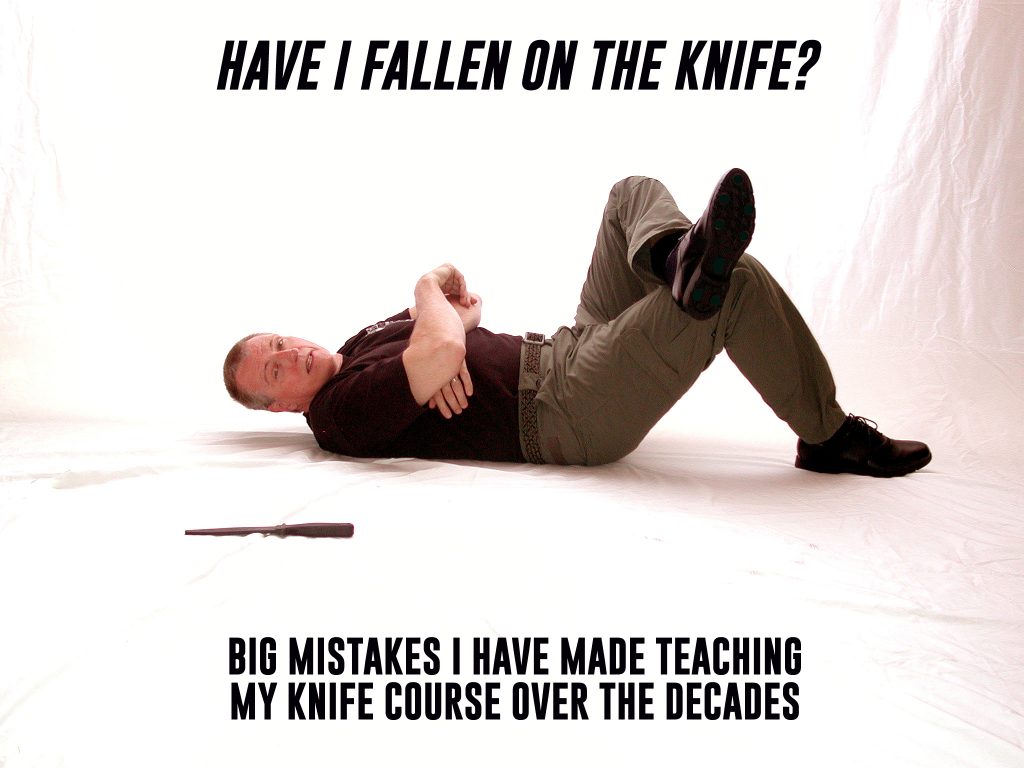

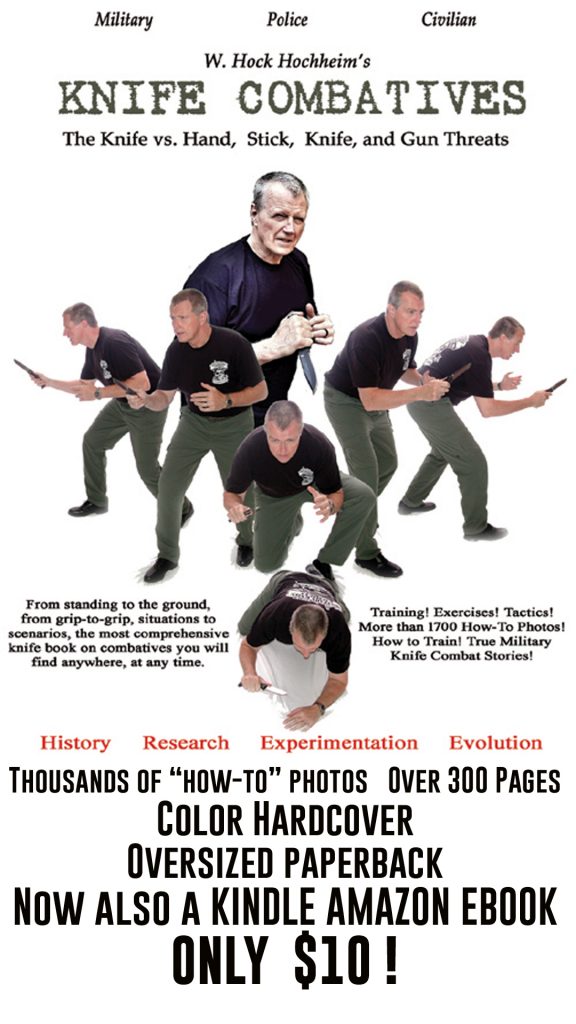
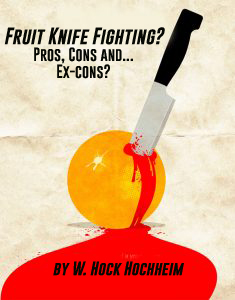

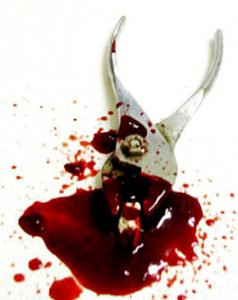
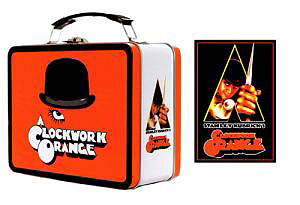
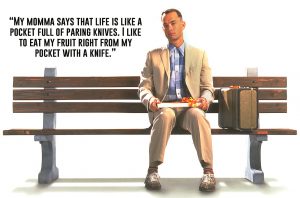
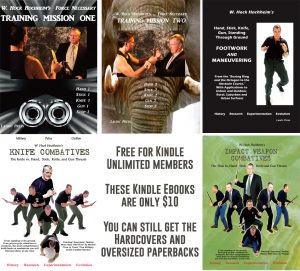
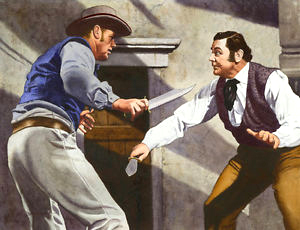
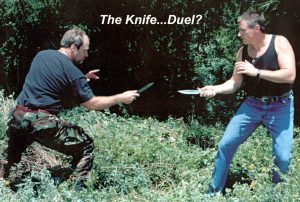
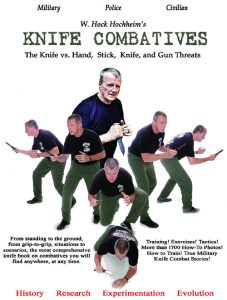
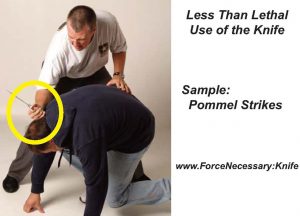
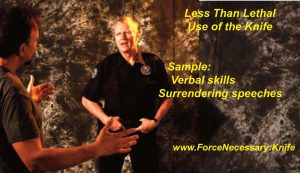
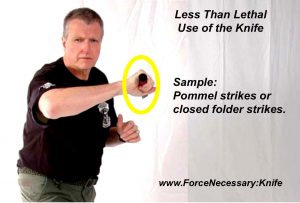
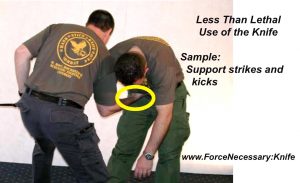
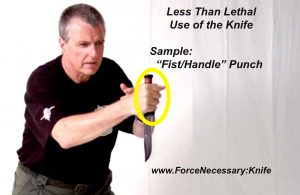
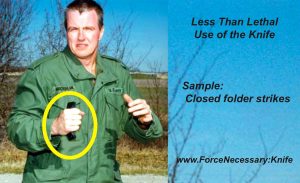
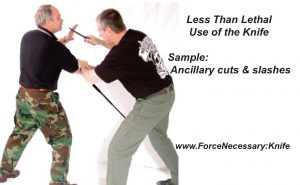
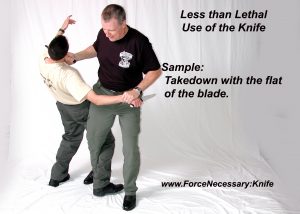
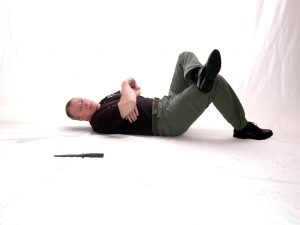
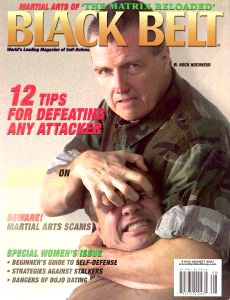
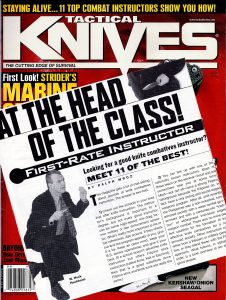
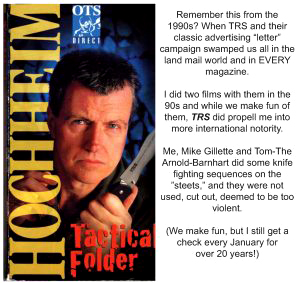
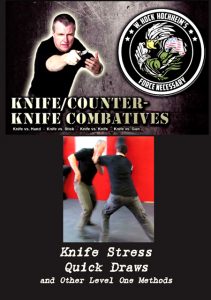

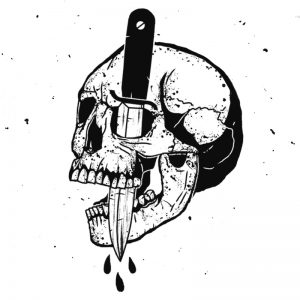
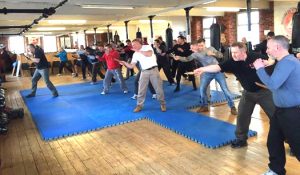


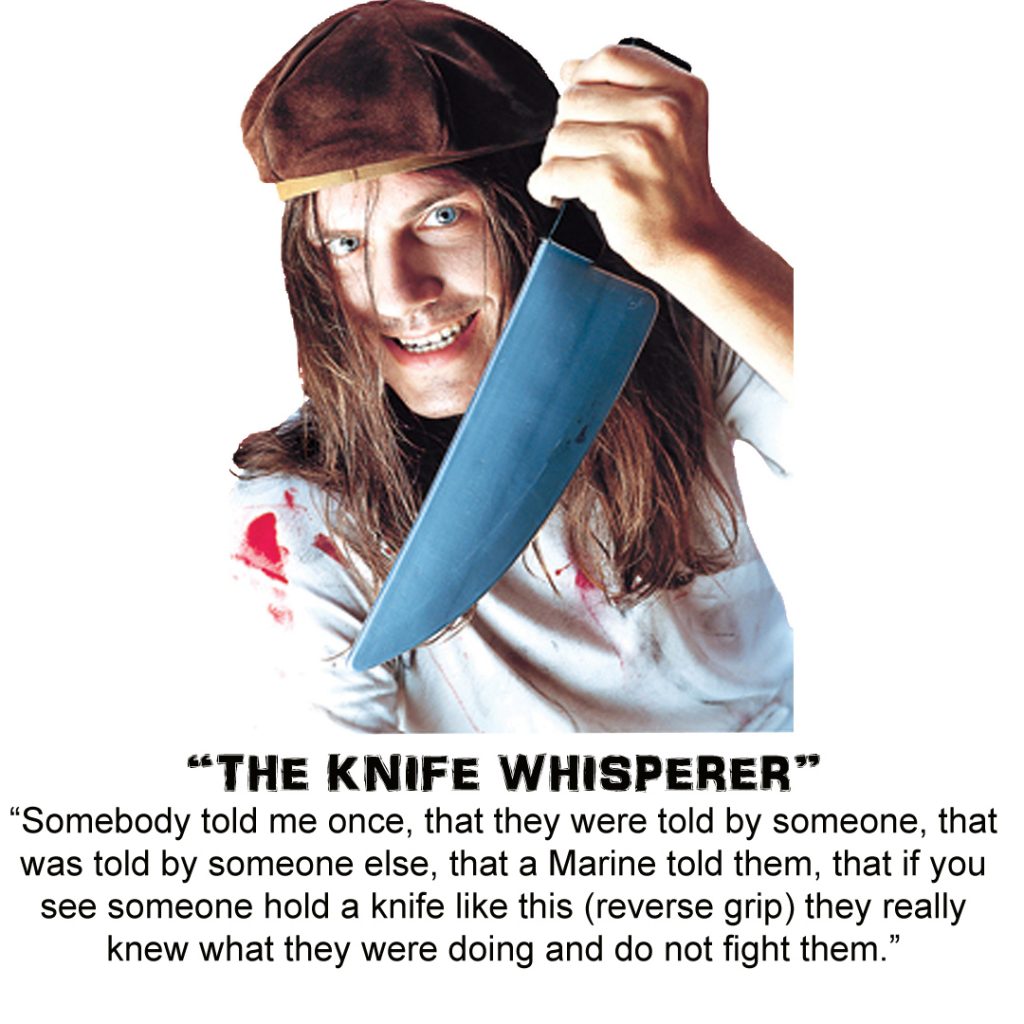
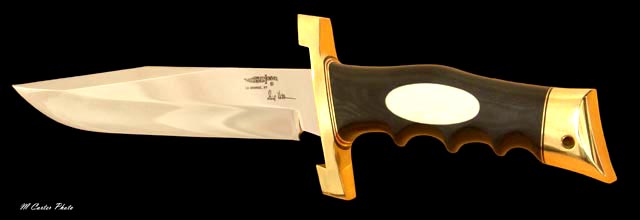 Did Ed Parker demand the knife and all subsequent training be in a reverse grip? I don’t know. It is widely reported that in 1968 Gil designed the Kenpo Knife (sometimes called the Ed Parker Fighting Knife) for his black belt thesis on knife fighting using Kenpo tactics. These tactics are conducive to karate-kickboxing. Maybe some historian reading this will know and tell us. But the reverse grip stuck.
Did Ed Parker demand the knife and all subsequent training be in a reverse grip? I don’t know. It is widely reported that in 1968 Gil designed the Kenpo Knife (sometimes called the Ed Parker Fighting Knife) for his black belt thesis on knife fighting using Kenpo tactics. These tactics are conducive to karate-kickboxing. Maybe some historian reading this will know and tell us. But the reverse grip stuck.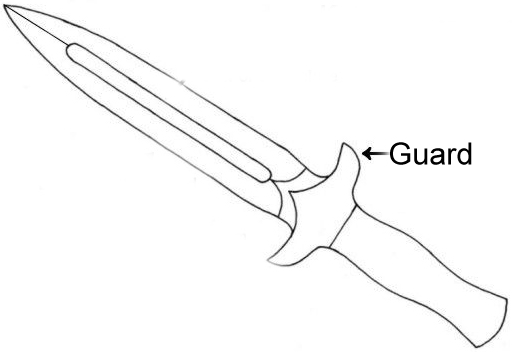 People pick grips for odd reasons too. I read from a guy writing about his grip choice. He said he once saw someone with a training knife, saber grip, stab a mitt and the guy’s hand slipped up on the blade. This made him pick the reverse grip. Really? That? Because if you don’t have a good guard, saber or reverse your hand can slip onto the blade. A
People pick grips for odd reasons too. I read from a guy writing about his grip choice. He said he once saw someone with a training knife, saber grip, stab a mitt and the guy’s hand slipped up on the blade. This made him pick the reverse grip. Really? That? Because if you don’t have a good guard, saber or reverse your hand can slip onto the blade. A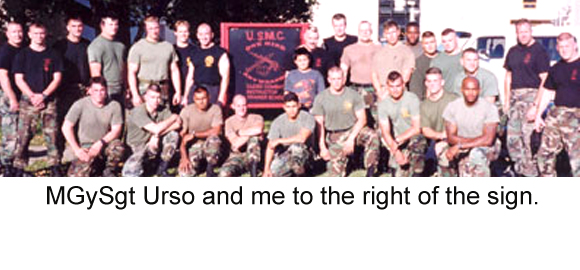
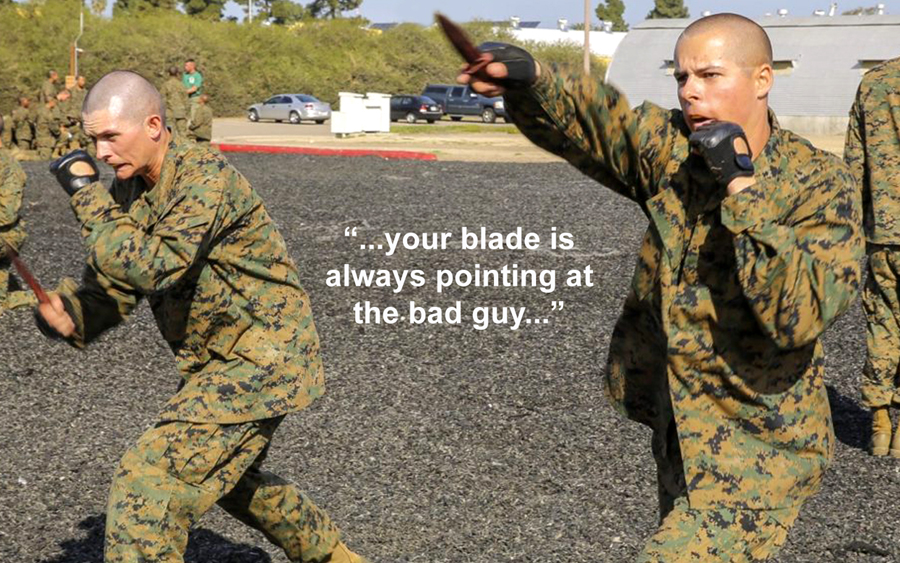
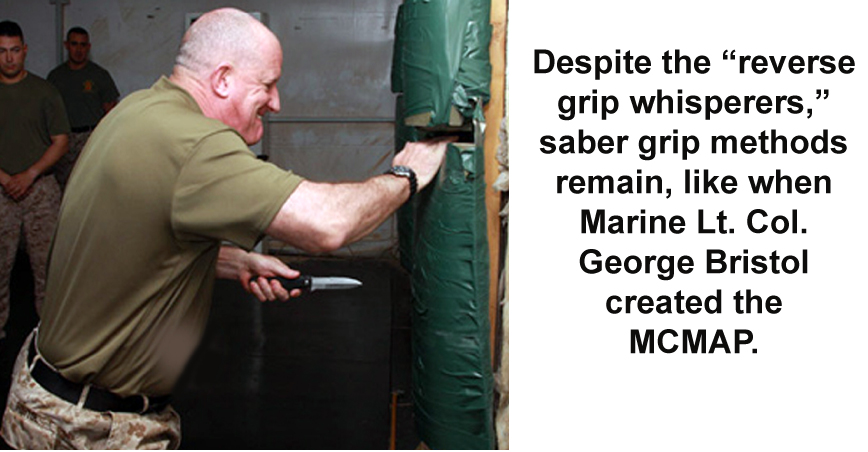
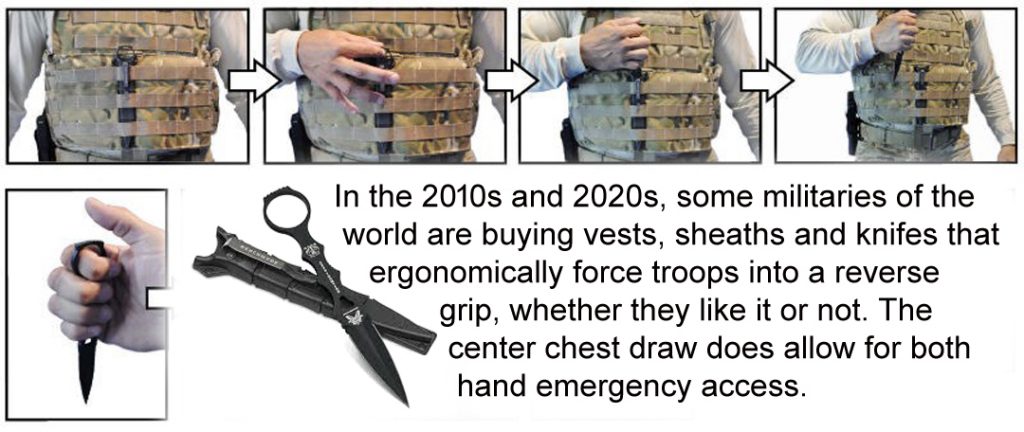
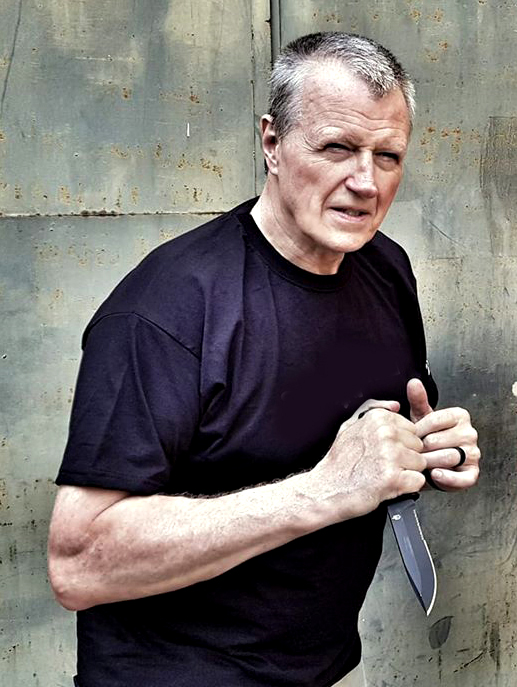 The reverse grip, edge-OUT offers a slashing possibility, an ADVANTAGE that might diminish or end the opponent alone. And a double-edged, or 1/4 or 1/2 or 3/4s or full sharp edge on the outer side is ALWAYS going to be a doctrine advantage. Maximize your survival with the most versatile knife. Reverse grip, edge-in? This is like only putting 2 rounds in a six gun.
The reverse grip, edge-OUT offers a slashing possibility, an ADVANTAGE that might diminish or end the opponent alone. And a double-edged, or 1/4 or 1/2 or 3/4s or full sharp edge on the outer side is ALWAYS going to be a doctrine advantage. Maximize your survival with the most versatile knife. Reverse grip, edge-in? This is like only putting 2 rounds in a six gun.
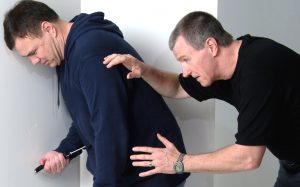
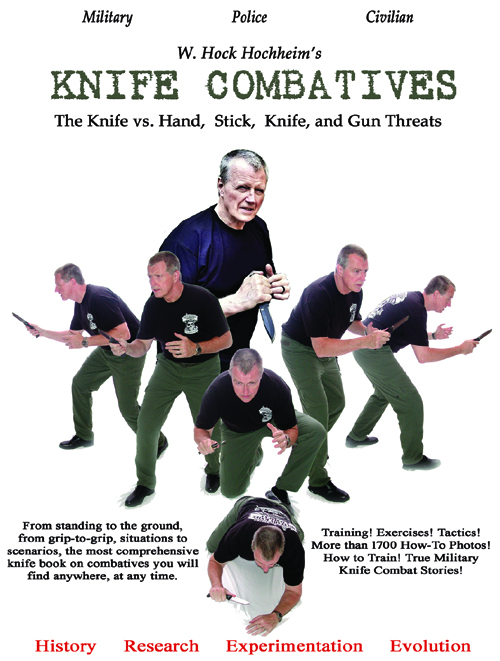
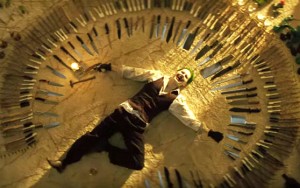
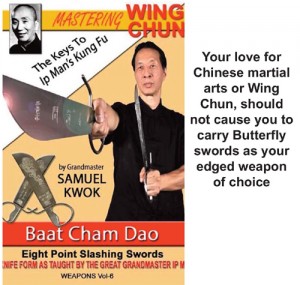

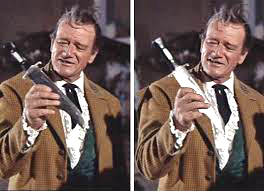
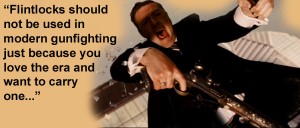


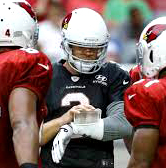
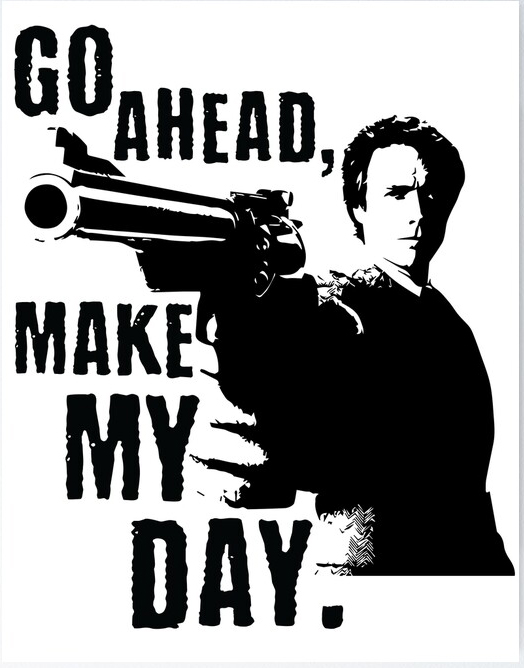 Fact: Some people do leave. You have the lingo-bingo and dodged the fight, or you have vamoosed yourself! (It’s the old, “why did you go there and why are you still there”?) On the flip side- will he leave? Will your pulled weapon make him leave? For many a year, 65% to 70% of the time when a knife or a pistol (sticks, by the way, are not in these study figures) is pulled in the USA, the criminal leaves you alone (old DOJ stats, old as it became harder and harder since the 1990s to find these numbers, as I don’t think the liberals like the message.) I have often heard the easy average of 67% used. But investigating crimes, I must warn folks that this is not as clean and simple an escape as it sounds. You pull, he walks away? Not so simple. There are many emotional, ugly events that happen in this weapon presentation-confrontation, even if the bad guy eventually leaves. In my experience and study, if the criminal is alone he might be quicker to leave, but if he is in or around a group, “his” group, he puts on more of a show before leaving to save face. We discuss these details in certain topical seminars and other specific essays. But a command presence while holding a weapon is worth looking into a mirror and practicing. I am sure Clint Eastwood did. And like actors practice their lines, it’s good to practice some lingo-bingo. Oh, and by the way Gorgo, you can’t shoot everybody.
Fact: Some people do leave. You have the lingo-bingo and dodged the fight, or you have vamoosed yourself! (It’s the old, “why did you go there and why are you still there”?) On the flip side- will he leave? Will your pulled weapon make him leave? For many a year, 65% to 70% of the time when a knife or a pistol (sticks, by the way, are not in these study figures) is pulled in the USA, the criminal leaves you alone (old DOJ stats, old as it became harder and harder since the 1990s to find these numbers, as I don’t think the liberals like the message.) I have often heard the easy average of 67% used. But investigating crimes, I must warn folks that this is not as clean and simple an escape as it sounds. You pull, he walks away? Not so simple. There are many emotional, ugly events that happen in this weapon presentation-confrontation, even if the bad guy eventually leaves. In my experience and study, if the criminal is alone he might be quicker to leave, but if he is in or around a group, “his” group, he puts on more of a show before leaving to save face. We discuss these details in certain topical seminars and other specific essays. But a command presence while holding a weapon is worth looking into a mirror and practicing. I am sure Clint Eastwood did. And like actors practice their lines, it’s good to practice some lingo-bingo. Oh, and by the way Gorgo, you can’t shoot everybody. 